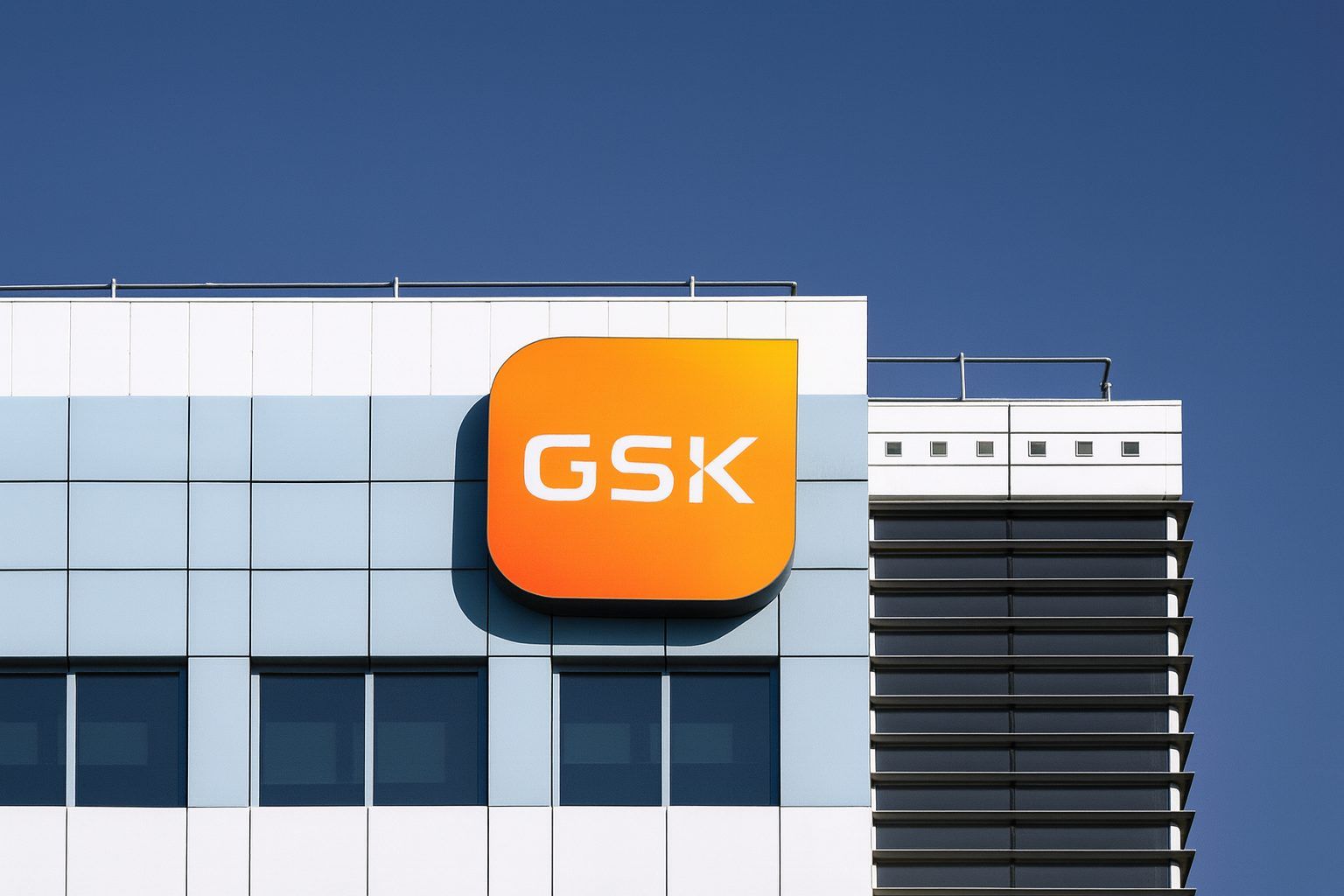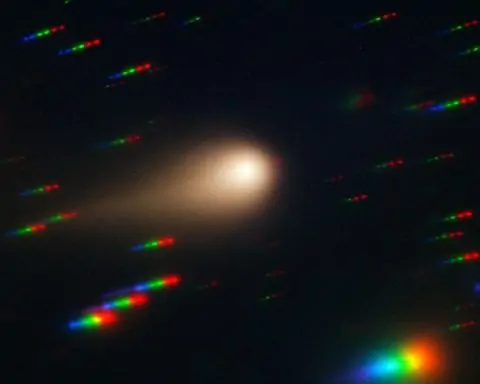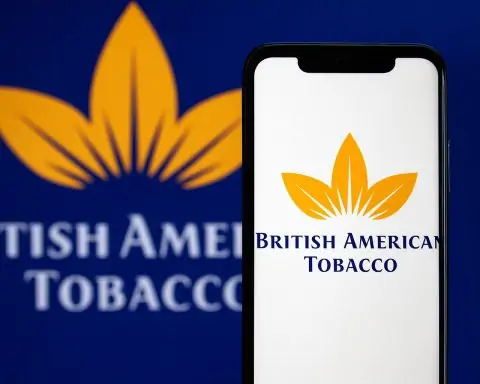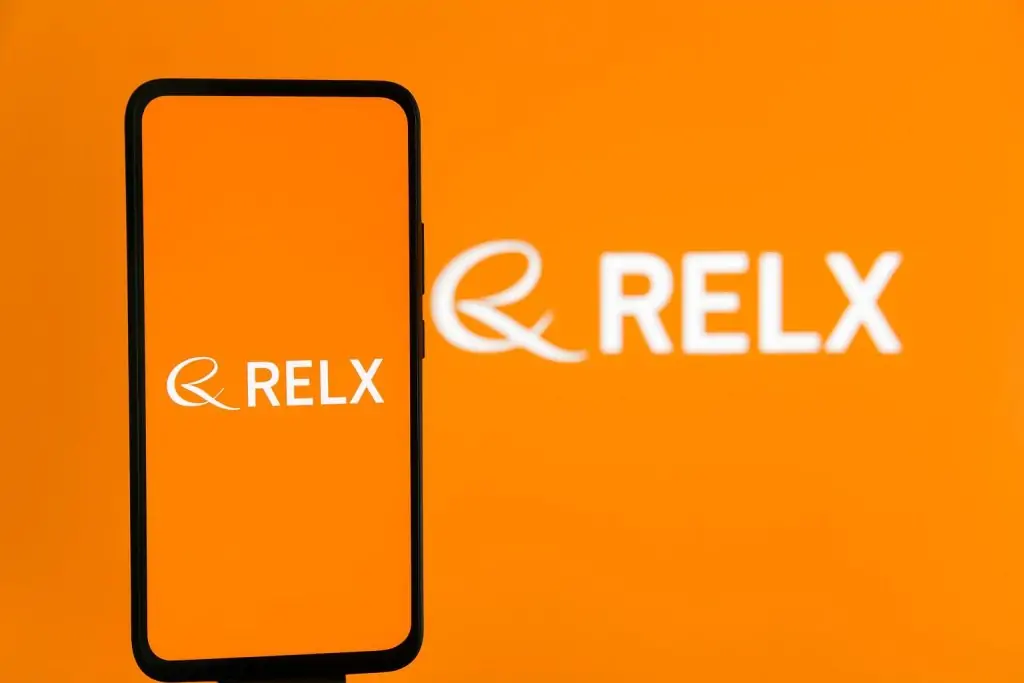GSK plc (LON:GSK; NYSE:GSK) is drifting quietly higher on Friday, 28 November 2025, with investors digesting a fresh “Hold” consensus from Wall Street, another round of share buybacks and a still‑busy drug pipeline that has pushed the stock close to 12‑month highs.
In London, GSK’s shares are trading around 1,806p, up roughly 0.2% on the day, within a narrow intraday range of 1,802.5p–1,810p and not far from their 52‑week high of 1,830p. [1]
On the New York Stock Exchange, the company’s American Depositary Receipts (ADRs) change hands at about $48.02, virtually flat in early trading but hovering just below a 12‑month high of $48.69, with today’s range reported around $47.98–$48.36. [2] At that level GSK carries a market value of roughly $97.5 billion, trading at about 13.6× earnings with a PEG ratio near 1.9 and a low beta around 0.5, signalling relatively muted volatility vs the broader market. [3]
So what’s actually new for GSK on 28 November 2025, and how does it plug into the bigger story?
GSK share price today: steady climb near 12‑month highs
London listing (GSK.L)
Latest historical and intraday data for Friday show: [4]
- Last price: ~1,806p
- Change on day: +0.22%
- Open: 1,809.5p
- Day’s range: 1,802.5p–1,810p
- 52‑week range: 1,242.5p–1,830p
- Recent trend: After a sharp move higher post‑Q3 results at the end of October, the shares have been consolidating just below their peak.
New York ADR (GSK)
On the NYSE, GSK’s ADRs (each representing two ordinary shares) are quoted around $48.02. That’s: [5]
- Very close to the recent 12‑month high of $48.69
- Up almost 10% over the past month and over 40% vs a year ago
- Supported by rising earnings estimates and a perception that GSK is finally through the messiest phase of the Zantac/litigation overhang.
In plain English: the share price today is not exploding higher, but it is quietly flexing in the upper part of its recent range – exactly where you’d expect a stock that has already re‑rated on good news and is now waiting for the next catalyst.
New today: MarketBeat confirms a “Hold” consensus on GSK
The headline piece of stock‑specific news dated 28 November 2025 comes from MarketBeat, which published an updated snapshot of analyst sentiment on GSK’s ADRs. [6]
Key points from that report:
- Average rating:“Hold”
- Coverage: 7 research firms
- 1 analyst: Sell
- 4 analysts: Hold
- 2 analysts: Buy
- Average 12‑month price target:~$44.13 – notably below the current ~$48 share price, implying modest downside vs the latest close.
- Recently:
- Wall Street Zen upgraded GSK to “Strong Buy”
- Weiss Ratings reiterated a “Buy”
- Bank of America lifted its view from “Underperform” to “Neutral”
- Jefferies maintained “Buy”
- CFRA set a $53 price objective
So the consensus “Hold” label hides a pretty split view:
- Some value‑oriented and income investors like the combination of a mid‑teens P/E, mid‑single‑digit sales growth and a solid dividend. [7]
- Others worry about litigation, tariffs, vaccine demand and the usual pharma bogeymen: patent cliffs and pricing pressure.
From a pure SEO/market narrative angle, today’s takeaway is: GSK is no longer unloved, but not quite a market darling either. The stock price has run ahead of the average target, which makes future guidance and pipeline news even more important.
Fresh RNS: GSK continues buybacks with another “Transaction in Own Shares”
Before the London market opened this morning, GSK issued yet another “Transaction in Own Shares” announcement via the UK’s Regulatory News Service (RNS). The notice (RNS number 3497J, timestamped 07:00 on 28 November) confirms continued purchases of ordinary shares under the company’s ongoing buyback programme. [8]
While today’s RNS text hasn’t yet been widely mirrored outside paid data platforms, recent filings sketch the scale of the activity:
- An RNS on 25 November confirmed that GSK bought 170,000 shares on 24 November at a volume‑weighted average price of 1,784.93p as part of its buyback. [9]
- A subsequent notice summarised the 26 November trades: 170,733 shares repurchased at an average 1,807.55p, bringing treasury holdings to roughly 236.1 million shares, or about 5.8% of voting rights. [10]
- A separate 6‑K filed in mid‑November showed that since 30 September 2025, GSK had bought back over 9 million shares, lifting total treasury shares above 256 million at that point. [11]
Today’s RNS is essentially the sequel: more of the same, at similar price levels. The implication is straightforward:
- Management is willing to retire equity at or near all‑time highs for the stock.
- At the current London price (~1,806p), that sends a reasonably confident signal about internal views of value and future cash generation.
For shareholders, the buyback supports earnings per share (EPS) growth and dividend sustainability by shrinking the share count, even if absolute profit growth slows.
Dividends and bonds: income investors get attention too
Equity income remains a big part of the GSK story.
- The board declared a 16p quarterly dividend with an ex‑dividend date of 13 November 2025 and payment due in early January 2026, consistent with a projected 64p full‑year dividend. [12]
- On the ADR side, the MarketBeat piece notes a $0.4171 quarterly payout, or roughly $1.67 annualised, implying a yield around 3.5% at today’s price and a payout ratio near 46% based on current earnings forecasts. [13]
On the debt side, GSK’s financing arm GSK Capital B.V. also has euro‑denominated bonds with coupon events landing on or around 28 November 2025, including a 3% 2027 note with a €3 annual coupon due to investors registered on this date. [14]
Taken together, today quietly underlines a theme: GSK is behaving like a mature, cash‑generative pharma – paying you to wait through the science cycle.
Q3 recap: upgraded 2025 guidance on the back of HIV and oncology
The calm trading today sits on top of a very lively October.
On 29 October 2025, GSK delivered Q3 numbers that beat expectations and raised guidance, triggering a sharp move higher in the stock and pushing the FTSE 100 to a record high. [15]
Highlights from that quarter:
- Revenue: about £8.55 billion, ahead of analyst estimates around £8.24bn.
- Core EPS:55p, versus ~47p expected.
- Specialty medicines (especially HIV and oncology) delivered double‑digit growth, with oncology revenue jumping close to 40% year‑on‑year.
- Vaccines: total vaccines revenue rose, with strong growth outside the U.S., but U.S. Shingrix sales fell ~15%, reflecting softer vaccine sentiment.
- New guidance for 2025:
- Sales growth:6–7% (up from 3–5%)
- Core EPS growth:10–12% (up from 6–8%)
CEO Emma Walmsley, delivering her final set of quarterly results before handing over to incoming CEO Luke Miels in early 2026, framed this as the continuation of GSK’s transformation into a focused biopharma company with 18 consecutive quarters of profitable sales growth. [16]
That Q3 upgrade is still the gravitational centre of today’s share price: the market is essentially marking time while waiting for the next data read‑outs, regulatory decisions and clarity on Miels’ strategic tweaks.
Pipeline and deal flow: oncology and infectious disease front and centre
Under the hood, GSK has been unusually busy. The news flow over the past few months reads like a greatest hits album of 21st‑century pharma buzzwords.
1. Oncology collaborations and approvals
- LTZ Therapeutics collaboration (19 November 2025) – GSK announced a strategic research deal with LTZ to develop up to four myeloid cell engagers (MCEs), an emerging immuno‑oncology modality that recruits myeloid cells to attack tumours. GSK is paying LTZ $50m upfront, with milestones and royalties layered on top. [17]
- Blenrep (belantamab mafodotin) – In October, the FDA approved GSK’s antibody‑drug conjugate Blenrep in combination regimens for multiple myeloma, after earlier setbacks. [18] This not only revives a once‑troubled asset, but also strengthens GSK’s broader ADC credentials.
- Oncology pipeline breadth – Recent announcements highlight orphan‑drug designations for certain ADC programmes and ambitions to expand into lung and GI cancers, positioning oncology as a long‑term growth engine. [19]
2. Vaccines: from Shingrix to RSV and beyond
- GSK won a positive CHMP opinion for a pre‑filled syringe (PFS) version of its shingles vaccine Shingrix, improving convenience and potentially supporting uptake in Europe. [20]
- The company continues to push Arexvy, its RSV vaccine for older adults, into more geographies and age cohorts, aiming to carve out durable share in a category that’s drawn intense competition. [21]
- A “low‑carbon” version of Ventolin (an asthma inhaler) delivered encouraging data, a small but symbolically important step in respiratory and sustainability narratives. [22]
3. Infectious disease and antibiotics
- A pivotal Phase 3 trial of tebipenem HBr, an oral antibiotic for complicated urinary tract infections developed with Spero Therapeutics, was stopped early after meeting efficacy targets – a rare bit of good news in the battered antibiotics space. [23]
- GSK also announced collaborations in tuberculosis drug discovery (notably with AN2 Therapeutics) and broader efforts in antimicrobial resistance, reinforcing its infectious‑disease credentials. TechStock²
4. Regional and strategic investments
- In September, GSK flagged plans to invest $30 billion in U.S. R&D and supply‑chain infrastructure over the next five years, including a $1.2 billion factory in Pennsylvania to produce respiratory and cancer drugs and additional investment in AI‑driven discovery. [24]
- The company remains active in China: earlier in 2025, GSK signed a up‑to‑$500m deal with Jiangsu Hengrui for rights to a respiratory medicine, helping diversify its regional exposure. [25]
For a company once criticised for a thin pipeline, the current news flow looks more like a crowded lab bench.
Risks still in focus: litigation, pricing and vaccine fatigue
The bull case on GSK today is not risk‑free, and the market knows it.
1. Litigation overhang
- GSK continues to manage legacy Zantac (ranitidine) litigation, though much of the most acute pressure has eased as key cases have been dismissed or settled. The company maintains a detailed microsite and disclosures for investors on the topic. [26]
- Other legal issues have popped up on the periphery, such as a lawsuit‑driven dispute over Jemperli royalties with AnaptysBio; here GSK (via its Tesaro subsidiary) faces competing claims over licensing economics for the checkpoint inhibitor. [27]
None of these currently look existential, but they do inject uncertainty into long‑term cash‑flow forecasts.
2. Drug pricing and tariffs
- On 29 October, outgoing CEO Emma Walmsley used the Q3 spotlight to press the UK government for reform of domestic drug pricing, warning that Britain’s ambition to be a “life sciences superpower” will falter without a more supportive reimbursement environment. [28]
- GSK’s upgraded guidance explicitly bakes in U.S. tariffs, including 15% levies on some European imports, underscoring the geopolitical overlay now baked into pharma margins. [29]
3. Vaccines demand uncertainty
- The Q3 results revealed a double‑digit decline in U.S. Shingrix sales, which management tied partly to broader scepticism around vaccines in the U.S. market. [30]
- While European and international demand is compensating for now, investors remain wary of how durable vaccine revenue will be in a world of politicised public health.
Side note: Haleon and the consumer‑health echo
GSK fully spun off its consumer‑health arm Haleon in 2022, but the story still tugs on GSK’s orbit.
On 28 November 2025, India’s Economic Times reported that Haleon India is set to appoint Kedar Lele, outgoing MD of Castrol India, as its new local chief, replacing Navneet Saluja. The unit markets familiar brands such as Sensodyne, Crocin, Iodex and Eno. [31]
GSK now treats Haleon like a financial asset rather than an operating division, but leadership moves and performance at Haleon still matter insofar as they influence the valuation of the stake GSK retains and the broader narrative around the group’s “slimmed down” biopharma focus.
What 28 November 2025 means for GSK shareholders
Put today’s threads together and the picture looks something like this:
- Price action: GSK trades near the top of its 12‑month range in both London and New York, reflecting a strong run driven by upgraded guidance and de‑risking of litigation, not a sudden euphoric spike. [32]
- Valuation: At around 13–14× earnings with a 3–3.5% dividend yield and modest growth, the stock sits in that awkward but interesting zone between classic “defensive income” and “growth at a reasonable price.” [33]
- Capital returns: The combination of a recurring 16p quarterly dividend and an aggressive share‑buyback programme is materially boosting per‑share metrics and signalling confidence from management even at elevated prices. [34]
- Fundamentals: Upgraded 2025 guidance, strong specialty‑medicine growth, and a broadening oncology/vaccine pipeline provide a credible growth story, particularly when backed by a $30bn U.S. investment plan. [35]
- Risks: Litigation, vaccine demand volatility, pricing pressure and the usual binary outcomes of drug development remain real and non‑trivial.
For short‑term traders, today looks like a digestion day: the big re‑rating move happened after Q3; now the stock is trading around fair value as defined by optimists, and above fair value as defined by more cautious analysts.
For long‑term investors, the story as of 28 November 2025 is that GSK is increasingly behaving like what it always said it wanted to be: a focused, innovation‑driven biopharma that still throws off dependable cash. Whether that’s enough depend on your tolerance for litigation noise, your view on vaccine politics and how much faith you place in the oncology pipeline.
References
1. www.investing.com, 2. www.investing.com, 3. www.marketbeat.com, 4. www.investing.com, 5. www.investing.com, 6. www.marketbeat.com, 7. fintel.io, 8. uk.advfn.com, 9. www.tradingview.com, 10. www.investegate.co.uk, 11. www.stocktitan.net, 12. stockinvest.us, 13. www.marketbeat.com, 14. stockevents.app, 15. www.reuters.com, 16. www.thetimes.com, 17. www.gsk.com, 18. www.sharesmagazine.co.uk, 19. www.sharesmagazine.co.uk, 20. www.sharesmagazine.co.uk, 21. www.reuters.com, 22. www.sharesmagazine.co.uk, 23. www.sharesmagazine.co.uk, 24. www.gurufocus.com, 25. www.reuters.com, 26. uk.advfn.com, 27. simplywall.st, 28. www.theguardian.com, 29. www.reuters.com, 30. www.reuters.com, 31. m.economictimes.com, 32. www.investing.com, 33. fintel.io, 34. www.tradingview.com, 35. www.reuters.com








